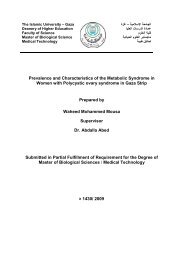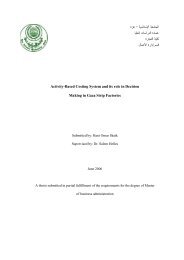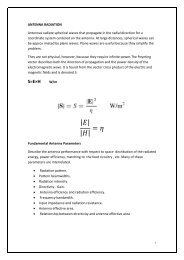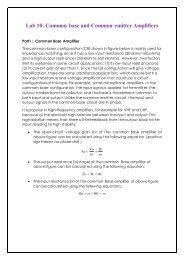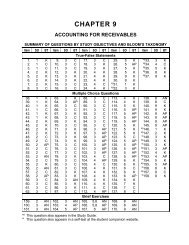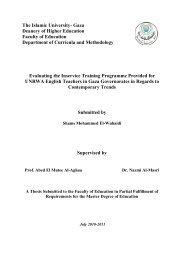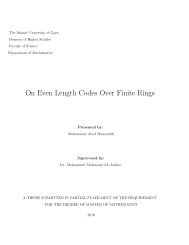A prActicAl guide Benchmarking in european Higher education
A prActicAl guide Benchmarking in european Higher education
A prActicAl guide Benchmarking in european Higher education
You also want an ePaper? Increase the reach of your titles
YUMPU automatically turns print PDFs into web optimized ePapers that Google loves.
CONCEPTS AND PRACTICES OF BENCHMARKING<br />
<strong>Benchmark<strong>in</strong>g</strong> relates to quality assurance, as mentioned above, and <strong>in</strong> particular<br />
to the concept of cont<strong>in</strong>ual <strong>in</strong>stitutional evaluation, s<strong>in</strong>ce to undertake<br />
benchmark<strong>in</strong>g universities have to map, analyse and evaluate their <strong>in</strong>ternal<br />
processes. Good identification and consciousness of one’s own practice is<br />
<strong>in</strong>dispensable for successful benchmark<strong>in</strong>g.<br />
Terms: <strong>in</strong>dicators, benchmarks, rank<strong>in</strong>gs, checklists,<br />
criteria, standards - and their <strong>in</strong>terrelations<br />
Some <strong>in</strong>itiatives called ‘benchmark<strong>in</strong>g’ only consist of collect<strong>in</strong>g quantitative<br />
statistics and performance <strong>in</strong>dicators and lack the focus on learn<strong>in</strong>g which is<br />
a dist<strong>in</strong>guish<strong>in</strong>g characteristic of benchmark<strong>in</strong>g. We should clarify how <strong>in</strong><br />
our use of terms a number of th<strong>in</strong>gs are related, realis<strong>in</strong>g that other actors<br />
have different uses of the terms. A hypothetical example may help.<br />
The first need is to know what constitutes ‘performance’. <strong>Higher</strong> <strong>education</strong><br />
<strong>in</strong>stitutions have a number of performances (teach<strong>in</strong>g outputs, research outputs,<br />
etc.). The higher <strong>education</strong> <strong>in</strong>stitution must decide which performance(s)<br />
is/are <strong>in</strong> need of improvement. Besides an <strong>in</strong>stitution’s own performance<br />
goals, often authorities def<strong>in</strong>e certa<strong>in</strong> requirements too: <strong>in</strong>crease the number<br />
of students <strong>in</strong> mathematics, achieve social equity of access, m<strong>in</strong>imise time to<br />
degree, have a development plan, set a quality assurance policy, etc. Such<br />
def<strong>in</strong>itions of th<strong>in</strong>gs to be performed, especially if set by external authorities,<br />
are variously called standards, criteria, checklists and even benchmarks<br />
(e.g. that is how the EU understands ‘benchmarks’ for higher <strong>education</strong>). In<br />
the latter case, please note that our use of the term ‘benchmark’ is different:<br />
for what we would call a standard (e.g. a higher proportion of students <strong>in</strong> the<br />
sciences is desired), 7 one or more <strong>in</strong>dicators can be found (e.g. ratio of<br />
newly enter<strong>in</strong>g students <strong>in</strong> study programmes <strong>in</strong> the Faculty of Sciences); for<br />
these <strong>in</strong>dicators criteria may be formulated (e.g. the ratio should grow annually<br />
by at least 20%)—and then data have to be collected to f<strong>in</strong>d out about the<br />
situation regard<strong>in</strong>g this criterion. In the next step, one might compare one’s<br />
own ratio with those of others to f<strong>in</strong>d the highest around. The highest<br />
relevant value found we would call the benchmark: say one higher <strong>education</strong><br />
7<br />
A list of standards, especially if they were formulated <strong>in</strong> terms of ‘presence’ or ‘adequacy’ of a number of items,<br />
could be called a checklist, e.g. higher <strong>education</strong> <strong>in</strong>stitutions should have a formal quality policy, a formal<br />
mechanism for curriculum review, and honest and open assessment of students (the first three ‘standards’ of<br />
the European Standards and Guidel<strong>in</strong>es).<br />
36 A Practical Guide - <strong>Benchmark<strong>in</strong>g</strong> <strong>in</strong> European <strong>Higher</strong> Education




